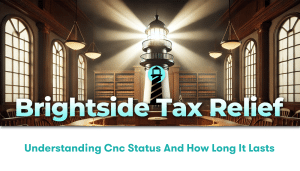Understanding Partial Pay Installment Agreements
An important service that Brightside Tax Relief LLC provides to clients is facilitating Partial Pay Installment Agreements (PPIA) with the Internal Revenue Service (IRS). Being a nationwide tax relief company, we engage with taxpayers from various walks of life who seek our professional assistance to manage their tax liabilities.
A PPIA, as established by the IRS, is a remarkable solution to deal with unmanageable tax debts. It involves making monthly payments towards the tax debt that eventually reduces the driving tax liability even though it may not necessarily clear the whole debt.
Advantages of a Partial Pay Installment Agreement
Opting for a PPIA brings several advantages to the table. The foremost benefit that we at Brightside Tax Relief LLC recommend is the reduced financial stress you’ll experience. With a PPIA, you have the assurance that the IRS will no longer deploy aggressive collection tactics against you, such as wage garnishing or levying your bank accounts.
Another advantage is that the monthly payment under a PPIA is calculated based on your ability to pay, thus ensuring that you’re not overburdened.
Moreover, you are at liberty to propose the monthly amount you can afford based on your income and allowable expenses.
Additionally, under a PPIA, as long as the agreed payments are made, the IRS is prohibited from collecting more than the agreed amount, even if you acquire additional assets or your income increases.
Becoming Eligible for a Partial Pay Installment Agreement
The IRS isn’t willing to grant a partial payment installment agreement to every taxpayer. To be a suitable candidate, firstly, all your tax returns would need to be appropriately filed.
Secondly, you must not have the capacity to pay your tax debt in a lump sum or through an installment agreement within the statute of limitations – typically ten years from when the tax was assessed.
Finally, the IRS must determine that the amount you can pay over the life of the statute of limitations is less than the full amount of debt outstanding.
Considerations when Applying for a PPIA
Should you conclude that a Partial Pay Installment Agreement is the best course of action for you, it is vital to remember certain points:
- Documentation: The IRS requires detailed financial information from you that includes your assets, debts, income, and expenses.
- Complications: A PPIA application is a complex process with many nuances. Thus, it is advised to seek the guidance of qualified tax professionals, such as Brightside Tax Relief LLC, to ensure an error-free application process.
- Review: The IRS has the authority to review your PPIA every two years and adjust the payment amount based on changes in your financial situation.
Initiating a PPIA Application
To start the PPIA process, visit IRS website and fill out the necessary forms. It’s crucial to equip yourself with the right information. Thus, be sure to review the Form 9465 ‘Installment Agreement Request’ to comprehend the financial information required by the IRS.
While applying for a PPIA can be cumbersome, with income, expenses, and assets to account for, the ultimate relief on payment makes it worthwhile. Do not hesitate to engage professionals like us at Brightside Tax Relief LLC to successfully negotiate a PPIA that aligns with your financial situation.
Conclusion
The Partial Pay Installment Agreement is a valuable yet underused IRS program for taxpayers with substantial tax debts. If the allocated monthly installments are maintained, it successfully prevents deprecating collection actions while reducing the tax debt substantially.
Taking advantage of a PPIA to reduce financial stress requires diligence, astute financial understanding, and professional expertise. At Brightside Tax Relief LLC, our tax professionals guide you through every step, ensuring you find the tax relief you need.
Remember, tax debts aren’t to be overlooked. Act responsibly, seek professional advice, and consider a Partial Pay Installment Agreement if you require a lifeline against an overwhelming tax debt.




